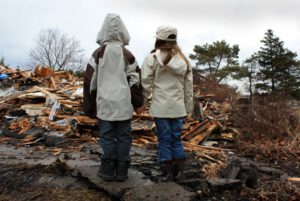After a natural disaster, it’s important to call in professional help. Disaster Cleanup specialists can restore your property to its pre-disaster condition.
Cleaning companies should stock up on safety supplies, especially if they will be working in a building affected by contamination like mold or carbon monoxide. They should also make sure to be registered in SAM, a government contractor database.
Depending on the type of natural disaster that occurs, cleaning up and repair work can be difficult and hazardous. Floods, fires, landslides, hurricanes, and tornadoes can all cause damage to homes and businesses. Disaster cleanup can involve pumping out water, cleaning mold, and restoring electrical systems. People performing disaster cleanup may be exposed to a variety of hazards, including live wires, contaminated water, fallen trees, carbon monoxide, and dangerous working conditions.
The first step in a disaster cleanup is to examine the damage and assess the situation. This is a dangerous job and should be performed only by qualified professionals. Homeowners should never return to their homes until local authorities advise them that it is safe to do so. Before entering a home, check the outside for any signs of danger, such as broken glass, structural damage, and loose power lines. If you have to enter a damaged building, be sure to wear sturdy shoes and use a flashlight. It is also a good idea to bring a pair of gloves and eyewear.
Before starting to clean up, listen to your radio or television for information from local officials about how to proceed. The information you hear may change quickly, so it is important to stay tuned for updates. It is also a good idea to keep children out of the disaster area. Seeing the damage may upset them and have long-term effects on their mental health, such as nightmares.
During the inspection of your property, take photos or video if possible to document any damage. Also, be sure to save any items that can be salvaged for future insurance claims. You should also keep receipts for any costs incurred as a result of the disaster.
Remove Debris.
Disasters cause significant damage and create debris, which must be removed from the area before rebuilding can begin. Debris removal is a complicated process that involves evaluating and clearing various types of waste materials. It can include soils and sediments, vegetation (trees, limbs, and shrubs), construction and demolition wastes, vehicles, household hazardous waste such as cleaning products or pool chemicals, food waste, and white goods (refrigerators, freezers, and air conditioners).
Debris management is a critical process that affects the safety and well-being of residents after natural disasters. It involves ensuring that all debris is safely cleared and removed in accordance with regulations and procedures. This includes ensuring that the right material is picked up and sent to the proper location. It also involves monitoring and minimizing the amount of debris that is stored while waiting for a final disposal site.
Local governments, including city, county, and state governments, are responsible for managing and supporting debris removal efforts. They will often contract with private debris removal service providers to help clear the waste and restore the affected areas.
Disaster cleanup is hazardous work and requires training to recognize potential hazards. People who participate in this work can face health and safety risks, including downed electrical power lines, mold, carbon monoxide, tree-trimming hazards, heavy equipment, thermal stress, musculoskeletal injuries, and fatigue. Additionally, it’s important to wear personal protective equipment, including gloves, respirators, and eye protection, when working on disaster cleanup. NIOSH also recommends that individuals not work alone and take precautions to avoid exposure to contaminated floodwaters or other contaminants.
Clean the area.
Disasters such as floods, fires, tornadoes, earthquakes, landslides, and other natural calamities are costly and traumatic for homeowners and businesses. They want professionals who can quickly respond, provide accurate estimates, and complete cleanup work promptly.
Performing disaster cleanup tasks exposes workers to a variety of risks, depending on the specifics of each situation. These include contamination of water or sewage, sagging ceilings and unstable structures, downed electrical power lines, carbon monoxide exposure, power generators, tree trimming, risky debris removal operations, and musculoskeletal hazards.
It is important to dry out all water-damaged areas and items as quickly as possible to prevent the spread of mold. Additionally, it is crucial to properly pump out flooded homes and remove any standing water.
When working on a disaster cleanup project, it is important to wear personal protective equipment, including hard hats, safety goggles or eye protection, and heavy-duty work gloves. Additionally, it is a good idea to bring additional supplies like flashlights with spare batteries, water, and snacks. Lastly, it is recommended that you pace your cleaning work over days or weeks to avoid physical exhaustion and emotional stress. In addition, it is a good idea to seek emotional support from friends, family, and/or mental health professionals.
Dry out the area.
After any water damage cleanup is complete, the area should be dried out as thoroughly as possible. This can be done using a shop-vac-style water vacuum or by mopping large areas and drying them with towels. Electronic items that are wet should be inventoried, disconnected from their power source, and placed in a bag of rice to absorb the moisture. This should be done as soon as possible to prevent mold growth.
